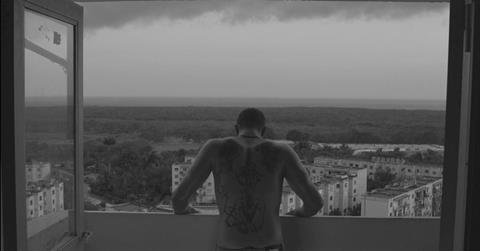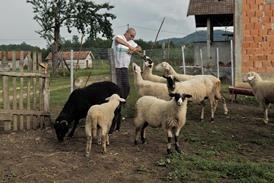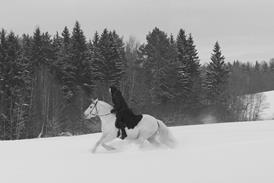The Cuban director talks about his inter-generational drama, which receives its world premiere in competition at International Film Festival Rotterdam (IFFR).

Cuban director Carlos M. Quintela’s inter-generational drama The Project of the Century (La obra del siglo) revolves around three men from the same family forced to live together in a small apartment in the shadow of an nuclear power station project.
It is set and shot against Cuba’s real-life Nuclear City in Juragua which was commenced with Russian backing but never completed.
It is Quintela’s second feature-length film after his award-winning The Swimming Pool, about four youngsters with disabilities taking a swimming lesson with a lacklustre teacher, which picked up prizes at the Havana, Miami and Marrakech film festivals.
He completed that film, based on a screenplay by Abel Arcos, while studying screenwriting at Cuba’s International Film and Television School in San Antonio de los Baños.
While there, he was taught by Hernan Mussalupi, who went on to produce The Project of the Century with Argentine producers Natacha Cervi and Pablo Chernov.
Quintela is also founding head of Uranio Films alongside Kate Hartnoll and Abel Miyares.
The filmmaker talked to ScreenDaily about the film.
You worked with writer Abel Arcos again on this film. How do you collaborate together?
Abel Arcos came up with the story of these three solitary men and I added the setting of the Nuclear City and when those two elements were in place we worked on the story together until it’s hard to tell who came up with what or where the inspiration came from.
Abel is very calm, he has a very good ear and the capacity to find the right thread in the hundreds of ideas that go through my head.
He was also the script supervisor on this film. At the end of each take I would always turn to him to ask: “How was that take? Did it have strength?” And he would say yes or no and I’d usually trust his call. It was important for me to have him on set and I’d like to carry on working with him. I write things by myself, but I think we work better and faster as a team.
And how did you get the producers on board and then pull together the finance? Is it hard to make films in Cuba?
To make films in Cuba you have to go with the flow. There are problems - even basic things like power cuts and not being able to find a working printer – which you can’t fight.
You have to work with the essence of things as they happen rather than worry about the finished product. Even if this means last minute changes to a script or simplifications to the mise-en-scene.
I didn’t know Cuba’s Nuclear City existed. Did you always have it in your mind as a potential backdrop for the film?
I found out about the Nuclear City about six years ago, I drove past it and I saw the dome from far away, it looked strange, alien in the landscape. We drove up to it, as close as possible until the security guard stopped us.
Later, when I was studying scriptwriting, we did a theatre workshop with the theatre group of the Nuclear City and I met Damarys Gutierrez and other people from the town. So I went back to Havana and crossed my fingers that no other Cuban filmmaker got there first.
Can you visit it? Was it easy to shoot in its environs?
I’d visited the town many times, and although there was no problem getting permission to film there, the shoot itself was very hard.
This is an urgent film, there’s a sense of urgency about it, the need to tell the story. Although we had state support and permission, we knew that these could easily be revoked with just one telephone call or slip-up on our part.
It’s a post-something landscape. Sadly, it’s been forgotten and left behind by my country, a ghost town filled with people of flesh and blood who have a very hard time making ends meet. But it’s not the end of the world… there are even more abandoned and isolated towns around there, for example a tiny town called Las Quinientas which is truly absolutely isolated.
The film was made with the support of the IFFR’s Hubert Bals Fund. How did this help in getting the film made?
Well we’re still paying off the debts incurred from making this film. It would have been impossible to make it without the help of festival funds, including the Hubert Bals Fund.
What are you working on next?
I’m not entirely sure what the next film is, there are several ideas going around my head, but I know it will be in Japan, principally because Naomi Kawase is on board as producer, we are currently looking for more funding. Making the film is a prize I won for The Swimming Pool in the Nara Film Festival.
Parallel to this, I’m working on various other projects including The Russian Playground, an archive based documentary about the Nuclear City and the Power Plant in Juragua, which I’m working on as scriptwriter and is directed by Kate Hartnoll, who was first Assistant director on The Project of the Century.
























No comments yet